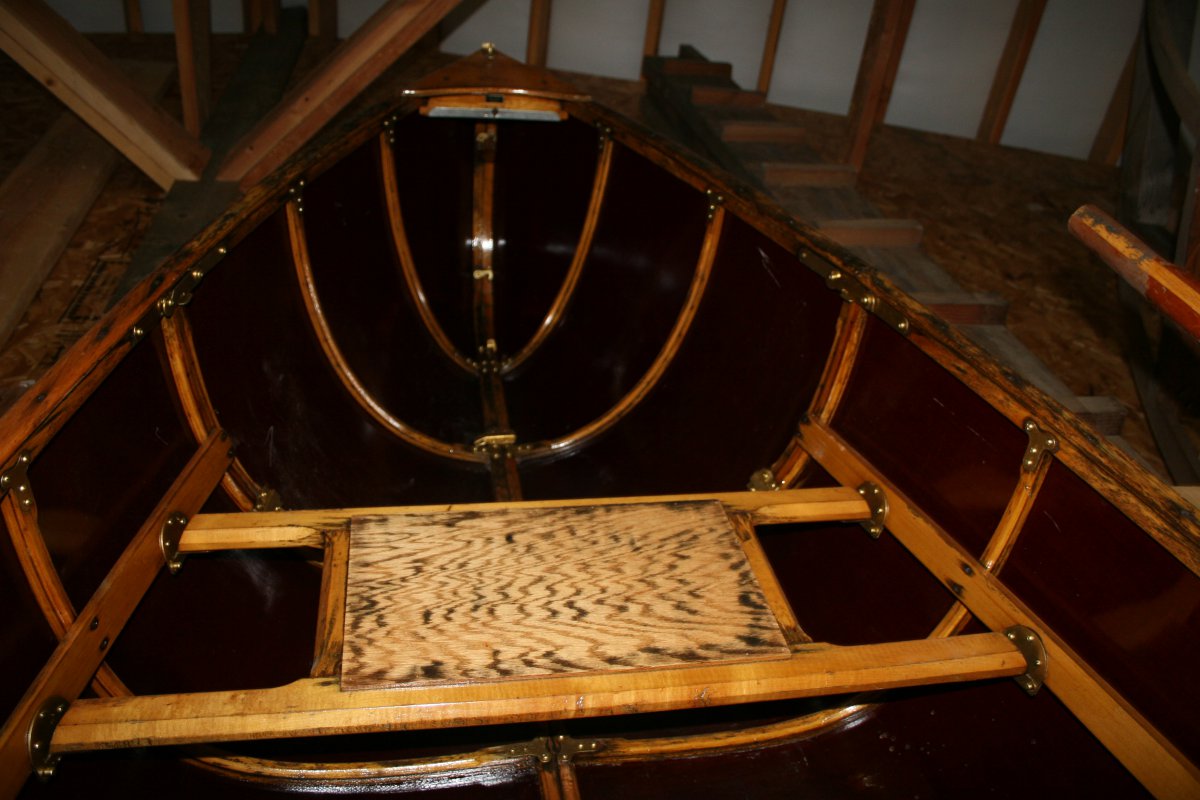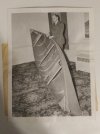I found a press photo of Ed Link at the introduction of his Linkanoe at the Hotel Lexington in New York in December of 1945. The small oval decal is present on the center thwart, but the large round "You
Can Take it With You" decal often seen on these canoes and boats is missing. I have a Linkanoe that does not have the decals either, and does not appear to have ever been refinished. I have never found a serial number on mine.
So I wonder if the "You
Can Take it With You" decal was a feature of later production, perhaps inspired by the popular play and subsequent movie "You Can't Take it with You" from the late thirties. I suspect this because the underlined "Can" nicely emphasizes its portability, and it would seem odd that Link would have omitted this from the debut of his truly portable canoe, if it was already part of his advertising campaign.
Also noticeable in the photo is about eight inches of lacing at the top of the bow stem of the canvas boot, likely to ensure a snug fit. Has anyone seen a Linkanoe with this feature? It seems likely it was cut from production to save costs. It sure would have been handy on mine, which tore because the boot was so tight and difficult to put on sixty-some years later. Unfortunately, the digital copy I have is too big to post. I'll try to fix that in the next few days.
The following is a transcription of the data on the reverse of the photo:
NEW PLASTIC PORTABLE CANOE
THE LATEST THING IN OUTDOOR PLEASURE CRAFT -- A STREAMLINED PLASTIC SECTIONAL CANOE WHICH CAN BE PACKED IN THE TRUNK OF AN AUTOMOBILE OR STOWED IN THE CABIN OF A PLANE, WAS UNVEILED TODAY AT THE HOTEL LEXINGTON BY LINK DEVICES, INC., BINGHAMTON, N.Y. THE LINKANOE CAN BE CARRIED IN TWO ZIPPER BAGS, AND ASSEMBLED INTO A FULL-SIZED 14 1/2 FOOT GUIDE CANOE IN LESS THAN 10 MINUTES. IT WEIGHS ONLY 65 POUNDS, AND IS MADE OF MOLDED PLASTIC WHICH IS NON-ABSORBENT, DOES NOT WARP AND IS IMPERVIOUS TO SALT WATER, OIL OR GASOLINE. METAL CLAMPS LOCK SECTIONS TOGETHER, AND A CANVAS SHEATH FITS OVER THE HULL.
780633. . . . . . . . . . . NEW YORK BUREAU
NEW YORK --
EDWIN A. LINK,INVENTOR OF THE LINK TRAINER, SHOWN WITH THE ASSEMBLED LINKANOE.
BUR SPEC TOLB #1A 80 CAN
12-28'45 N. E. A.








